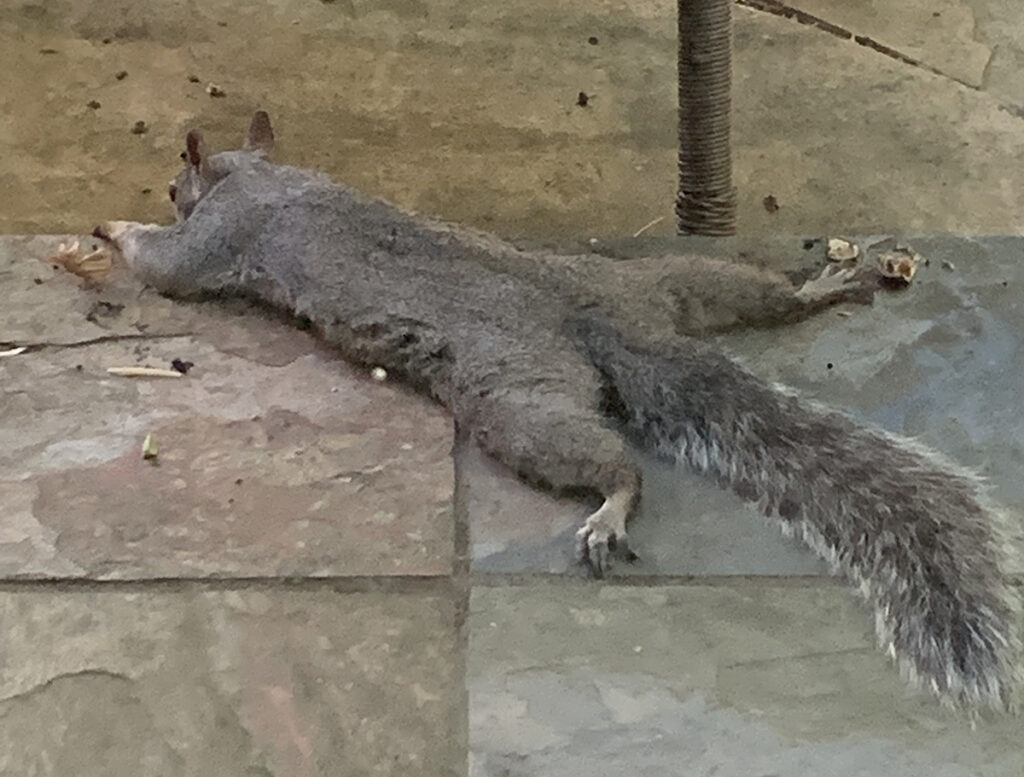
When you have a 70-foot Black Walnut in the yard, you have a lot of squirrels. Right now, a clutch of four are scampering around its branches, making a last-ditch effort to find any nuts that have not fallen and grab them before they’re gone. The competition is fierce and includes high speed chases through and around the massive trunks of the walnut, accompanied by vocalizations clearly intended to intimidate. The activity is halted only when nuts are being eaten, replaced with the sound of sharp teeth grinding their way through the walnut shells.
Grey squirrels don’t live very long, perhaps 3-5 years. In the decades we’ve lived under our Black Walnut, we’ve enjoyed many generations of these fluffy-tailed mammals and witnessed the ways in which the habits of squirrel culture change. Being squirrels, those changes revolve around nuts: when and how they’re collected, eaten and buried.
Like all small animals, instinct plays a role in how squirrels behave. That they eat or bury nuts is instinctual, but how and when they do it is not, and successive generations do it differently. This is why I call it squirrel culture; culture displays changes in habits and behavior and is variable. Those variations last for a while until a new generation does things differently. It’s much like human culture, where trends arise, become popular for a while and then recede and replaced with other trends. There are no squirrel advertising agencies, of course, so their cultural changes arise organically, and are not the product of marketing campaigns.
Many generations ago, our squirrels were patient. They waited for the walnuts to fully ripen before beginning to collect and eat them. Notably, those generations would only eat nuts collected from the tree; any nuts that had fallen to the ground were ignored, as if taboo. But the culture of successive generations changed. A new, younger clutch began to eat immature walnuts, seemingly too impatient to wait for them to ripen. Immature walnuts do not have the high level of fats and protein contained in mature nuts, but this habit persisted for several years. The pattern changed when a neighbor cut down some very large trees in their yard, including trees in which the squirrels regularly nested. For a year or more after, we saw almost no squirrels.
When a new group of squirrels returned, an interest in eating immature nuts did not return with them. Their behavior was otherwise squirrelly; the chasing, digging, burying, and chattering were incessant, but when it came to eating nuts, they were patient and only ate the ripe ones. And another change: nuts that had fallen to the ground were fair game, and no longer taboo.
Speaking of fair game, a family of foxes take up residence under our garden shed each year; I’m not sure how they feel about squirrels, but after months of eating walnuts the squirrels sure look fat and healthy.
Squirrels are adaptable and complex animals, complex enough to vary their behavior and, within limits, display a changing culture. To them, my wife and I are interlopers, lumbering hulks they tolerate while they hurriedly go about their short lives. They dig where they choose, up to and including potted plants and the gaps between flagstones. Our yard, trees, and roof belong to them, and whatever changes in human culture or the future inhabitants of our house, squrlz rule da hood.
(Photo: A backyard squirrel “splooging” on cool stones to escape the 112-degree heat this summer)